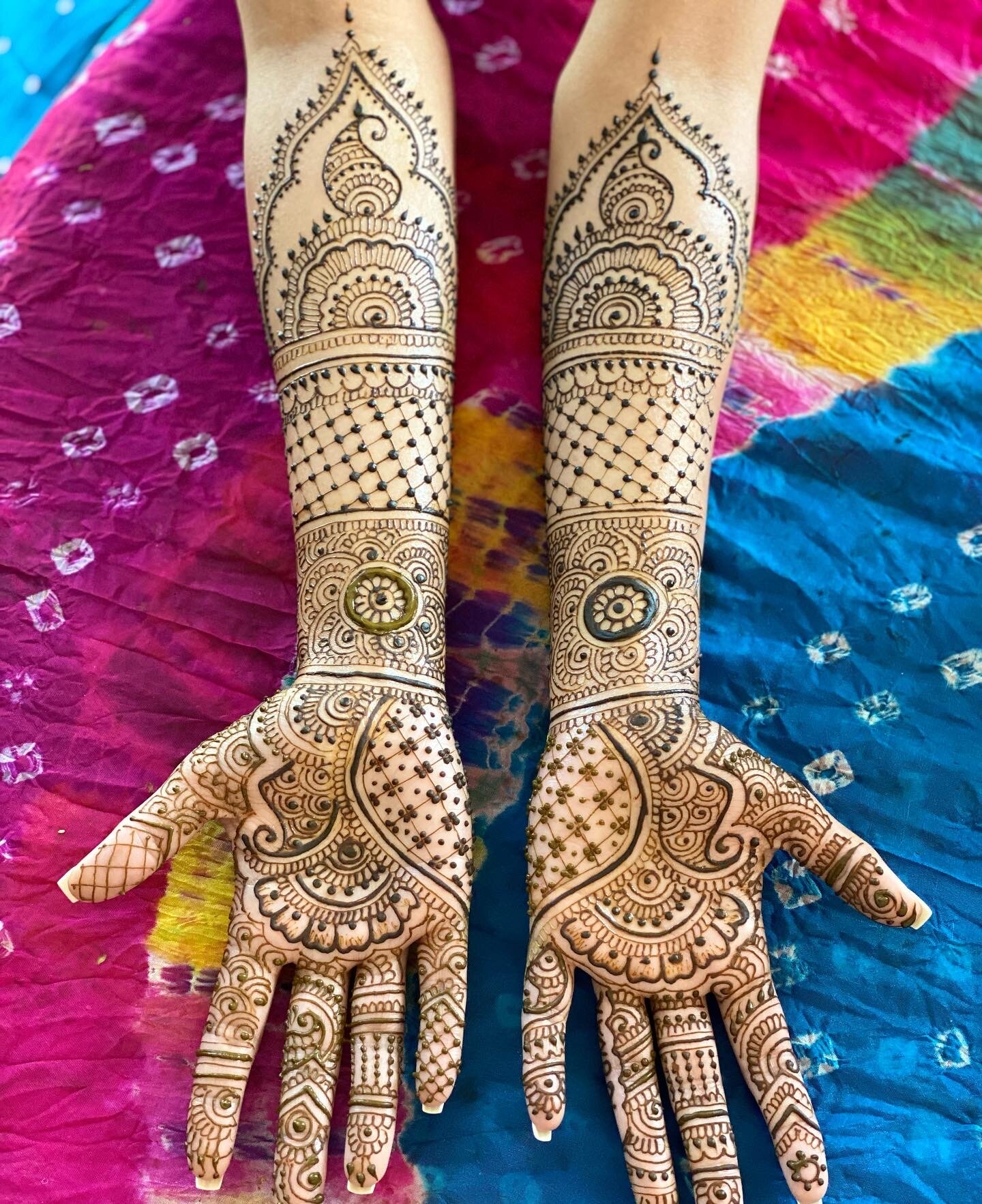The Art of Henna: Manisha Trivedi Shares Her Passion for The Age-Old Artistic Tradition, Advice to Beginners, and More
“Henna/mehndi is an ancient art, with so much richness to learn. But it is not recognized as publicly as many other art forms. My dream is to see the younger generations learn and preserve the Henna art form, so that we do not lose its wonderful traditions and practice.” Today’s woman dreamer, Manisha Trivedi, a self-taught henna artist and the founder of Henna Café, shares her tips for beginner henna artists, passion for the traditional art form, and the importance of using clean & natural ink. A true artist, enjoy Manisha’s lovely story!
1) Your henna designs are incredible. Tell us briefly about what Henna is, and the history & culture?
Varying between 4 to 8 feet in height, the henna (mehndi) plant is botanically known as “lawsonia inermis,” which grows as a small shrub in hot climates, like the Middle East, African countries, and India. Once the leaves from the shrub are harvested, they are dried, grinded, and sifted into a fine powder. The dried powder is then made into a paste by mixing in sugar, lemon juice, and essential oils, like eucalyptus, cajeput, lavender, and tea tree. It is the lawsone in henna, a natural dye molecule, that binds to the keratin in skin, which then makes the temporary stain. Natural henna will NEVER dye instantly, with the stain gradually darkening over the course of the next 24 to 48 hours. It will only penetrate the top layer of the skin, so as your skin exfoliates, the stain pigment will fade, making it “temporary” compared to a permanent tattoo. Not available in different colors, natural henna can however change color throughout the process. Henna is also commonly used as a conditioner and dye for hair. Due to its natural healing and cooling properties, people living in warmer countries, have been using henna to help control their body temperature.
The history and origin of Henna is hard to trace with centuries of migration and cultural interaction. However, historians argue that henna has been used for at least 9,000 years in both cosmetic and healing capacities. Henna is traditionally applied for celebratory occasions. One of the oldest known cosmetics, it has been used to adorn people all over the world for anything considered auspicious. Weddings and fertility are among the most common celebrations where henna is highlighted. There is no limit to the reasons one might choose to decorate themselves with this timeless leaf, but it is usually a still moment to mark a special moment in time. Over the years, the artistry behind henna has evolved at fashion shows, red carpet events, music festivals, and various other non-bridal events across the globe. Henna designs vary depending on the region. Arabic henna designs are abstract and less dense with designs featuring graceful, usually large, Floral and vine patterns on the hands and feet. Indian mehndi involves fine, thin lines for lacy, floral, paisley patterns with lines and dots, intricate patterns covering entire hands, forearms, feet and shins. African henna patterns are usually simple, bold, large geometric shapes and designs with abstract symbols.
2) How did you become interested in henna design? Why do you love making henna?
At a young age, I knew I had a creative side. In school, I filled my composition books cover-to-cover with designs. Though I had already started doodling with a henna cone at 12 years old, my journey as a professional henna artist began as a side gig when I moved to USA in 1999. My fascination with henna art led me to pursue my career as a henna artist. When I started @hennacafe, I didn’t think much about where I would take it or where it would take me! I began studying the work of other henna artists and spent several years practicing designs and perfecting my homemade henna blend. Henna has been and continues to be my artistic and creative outlet.
The most beautiful thing about henna art is that it has no boundaries of countries, culture, race, gender or socio-economic status.
I love that henna is not only a unique art form, but a gorgeous way of connecting with new people. In our increasingly electronic world, these connections, however brief, help to fulfill our basic human need for real contact with others. Some days, when I sit down to apply henna, I’m so focused; it’s like meditation for me. I don’t have anything around — no brain chatter, no thoughts. Other days, I have laughed, cried, and even cracked jokes with my brides to distract them from fidgeting or letting the anxiety settle in. I can proudly say I love what I do and I do what I love. I make sure my art tells a story. Even if there are no customized motifs included in the design, I make sure my designs all flow together. I love blending traditional design elements with a modern style. The process takes between 2 – 9 hrs. But the most fulfilling part of being a henna artist is to see happy and smiling faces after the artwork is applied – it’s priceless.
3) What are your 3 tips for those interested in learning henna?
Be consistent and patient!! Learning henna is like a marathon, not a sprint.
Please stay away from those fake and pre made henna cones. Learn to mix your own natural henna paste and cones.
Most importantly, don’t compare yourself with an established artist.
If you copy henna designs or take inspiration (nothing wrong with that!) by another henna artist, make sure to CREDIT them when you post your designs on social media.
“Passion for your work is a little bit of discovery, followed by a lot of development, and then a lifetime of deepening.” Angela Duckworth, Grit: The Power of Passion and Perseverance
4) As #Dreamcatchers, what is your next big dream?
Henna/mehndi is an ancient art, with so much richness to learn. Unfortunately, Henna artistry is not recognized as publicly as many other art forms. Both my challenge and dream are to see the younger generations learn and preserve the Henna art form, so that we do not lose its wonderful traditions and practice.
Thank you Manisha for sharing your lovely story with us! We are excited to have you in our empowered women’s network!
MORE LIKE THIS
BIo: Manisha Trivedi is a self-taught professional henna artist known for her unique henna artistry, blending traditional and contemporary design. Each henna session affords her a canvas to create one-of-a-kind designs. Her gift is being able to listen to and understand the story of each client, incorporating who the clients are and what they want, while staying true to her own artistry. With her henna career spanning over two decades, she has established herself not only as a creative contributor to the art of henna, but she is also a huge advocate for clean, safe, and natural henna, mixing her own paste before each henna session. She has also brought her creativity to the recovery of cancer patients, donating her artistry through henna crowns. Passionate about her work, she offers henna workshops at schools, libraries, hospitals, and yoga centers, inviting all to have a taste of the ancient art. For her, it is more than just work, it is a meditative experience that brings about a calmness in any environment.





